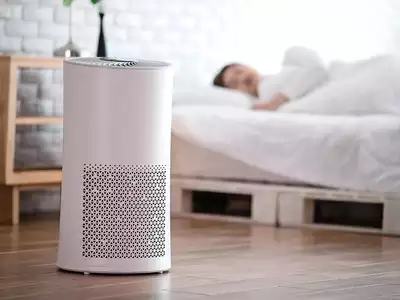Lost in our daily routines and busy lifestyles, few of us have the opportunity to regularly go to a park or outside the city for some clean, fresh air. A far more feasible solution to ensure that the air you breathe doesn’t contain harmful levels of pollutants, dust, and other particles is to use an air purifier. After all, the air quality in many city areas leaves a lot to be desired, and things are likely to only get worse if measures are not implemented soon. If not, this could lead to symptoms including eye irritation, nose and throat problems, headaches, and overall fatigue.
Table of Contents
What Are The Benefits of An Air Purifier?
Introducing an air purifier to the spaces where you spend most of your time, be it at the office or at home, can result in numerous important benefits. Depending on the filter in your air purifier, different pollutants will be pulled out and collected while the device is active. For example, the US EPA (United States Environmental Protection Agency) states that HEPA filters could catch up to 99.97% of dust, pollen, bacteria, mold spores, and other particles as small as 0.3 microns. Such capabilities may be extremely important for people suffering from allergies or hay fever, especially in the spring and summer.
Air purifiers can also provide relief from the symptoms of asthma by removing airborne contaminants that could trigger asthma attacks – smoke, pollen, dust, etc. However, it is important to keep in mind that the ones with filters that produce ozone are not recommended, as it is considered a lung irritant. Pet owners could also benefit greatly from an air purifier as the device will keep the air in their home free from pet dander.
4 Tips To Use An Air Purifier Correctly
To get the most out of your air purifier, there are several important factors and guidelines to keep in mind. Of course, the results may vary depending on the specific brand and model.
Match The Air Purifier To The Room
Air purifiers often have specific ratings depending on their capacity to keep the air in a room of a specific size clean. This means that you may need a more powerful device if you plan to use it in a larger space. In addition, air purifiers are only effective while they are working, as air filled with allergens and dust will naturally flow back into the room. In general, it is best to keep it on while you occupy the room and to turn it off when you leave. Air purifiers can be safely used at night, but depending on the model and its features, the noise they emit could be distracting.
Air Purifiers Do Not Dry Or Cool Air
It is important to have a realistic expectation of what the air purifier’s purpose and capabilities are. The main task of these devices is to pull air in, push it through a filter, and then release the cleaned air back into the room. The vast majority of models do not have the capability to cool or heat the air during this process. Most air purifiers also lack the necessary capabilities to make the air dry or more humid. To collect moisture from the air, you would likely need to acquire a dedicated device.
Don’t Neglect Cleaning The Filters
Over time, the filter of the air purifier will become less effective as debris and pollutants trapped in it begin to pile. It is crucial to know how to handle the specific filter in your device. Some need to be replaced completely, while others can be easily cleaned by being washed with cold water. To make sure what the recommended procedure is, you should consult the manual that came with your specific device.
Placement Is Important
To achieve the best results, make sure that the air purifier is placed accordingly and near the problem or source of pollutants. For example, if your pets stay mostly in one room of the home, then you may wish to keep the purifier there to quickly capture any dust and dander.
However, putting the device in a corner could limit its effectiveness. To operate up to its potential, the air purifier should have good airflow, meaning that the air is capable of easily circulating and passing through the device. If possible, place the purifier above ground level, especially if the heating in the room is on, as the hot air will quickly move upwards, taking the airborne pollutants with it.
Bottom Line
Improving the quality of the air you breathe can have many benefits, making the decision whether to get an air purifier quite an easy one. Getting the most out of the chosen device, however, will require a bit of planning in picking a suitable model and placing it accordingly in the room. The final results of you and your family breathing far better air is well worth it.
















